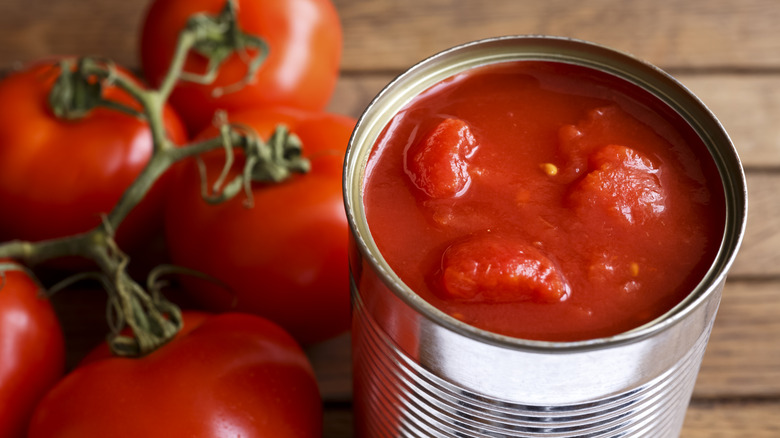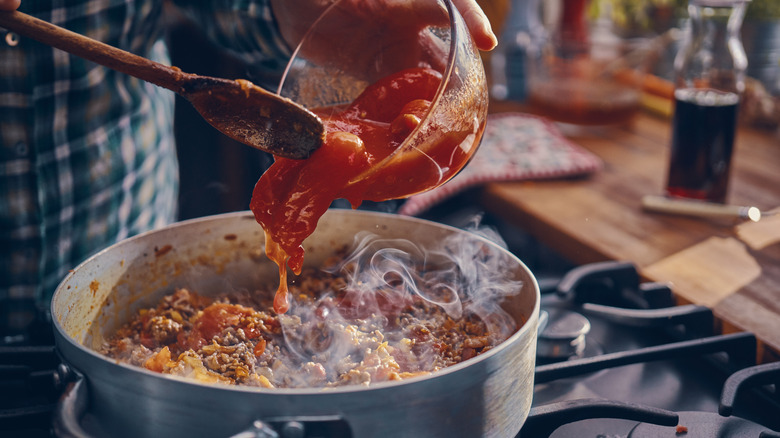The Best Reason To Pivot To Italian Canned Tomatoes
It's normal to dip your spoon into a bowl of soup and come up with bite-sized pieces of corn, potatoes, or carrots. But one veggie that you probably don't want to turn up? A canned tomato. This ingredient is deployed in a variety of warm, liquidy recipes like rib-sticking hamburger soup, slow cooker Mexican chicken tinga, and crispy and saucy chicken parmesan. Its main purpose is to add brightness and juiciness (and of course, a tomato flavor) to a plethora of saucy dishes. But in order to do that, the diced tomatoes need to break down.
If you're buying your cans from American brands, it's likely they'll be made with calcium chloride. This ingredient is meant to help diced tomatoes keep their shape, but when most recipes want them to break down in a soup or sauce, the additive can actually make it harder for them to do so. To get around this obstacle, try pivoting to cans of Italian tomatoes since these companies will typically leave it out.
How to find canned tomatoes that will break down during cooking
As with many ingredients, Italian brands typically focus on freshness in its canned tomatoes. Look to the products' short ingredients list for proof: La San Marzano diced tomatoes, for example, contain only the starring ingredient, tomato purée, basil leaf, and salt — no calcium chloride in sight. They're made and grown in Italy, but you can find this brand and others like it in the U.S. on Amazon and at major grocery retailers like Walmart. Check for words like "imported" or "made in Italy," and beware of imposters that say "Italian-style" instead.
If you can't find diced Italian tomatoes, you can also look for whole canned versions and dice or crush them yourself. Whole tomatoes typically don't contain calcium chloride, so you can also venture into American cans if you'd like. However, Italian options may still taste superior, especially if they're DOP certified, meaning they've met a series of Italian quality requirements. It may take an extra step to get whole tomatoes to be the consistency you want, but at least you know they'll break down when you're cooking.

